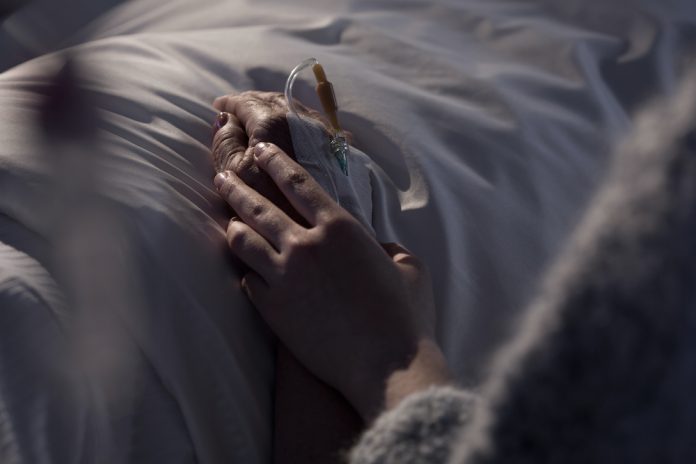
Help students discover the beauty of the Anointing of the Sick
LYNN WEHNER
The Sacrament of the Anointing of the Sick is about healing, renewal, and life. Yet the idea of illness or death can be difficult for young people to ponder. Our challenge in teaching this sacrament is to discover ways to express its beauty as a wonderful gift from our loving God.
The very core of the Good News is present here. The Catechism tells us:
By the sacred anointing of the sick and the prayer of the priests the whole Church commends those who are ill to the suffering and glorified Lord, that he may raise them up and save them. (CCC, 1499)
For those who are nearing death or are suffering due to serious illness or old age, this sacrament provides strength, courage, and peace. Poured forth is nothing less than the miraculous healing power of God, offered to us through the hands of his priests. This is the light of hope we are called to share with our students.
From the Word “Is any among you sick? Let him call for the presbyters of the Church, and let them pray over him, anointing him with oil in the name of the Lord; and the prayer of faith will save the sick man, and the Lord will raise him up; and if he has committed sins, he will be forgiven” (James 5:14-15).
The very core of the Good News is present here.
Class discussion
■ When can someone receive the Anointing of the Sick? (each time a Christian falls seriously ill … and also when, after he has received it, the illness worsens; see CCC, 1529)
■ What does this sacrament involve? (liturgical prayers and anointing the person with oil that has been blessed by the bishop)
■ What are the effects of this sacrament? (the uniting of the person to the passion of Christ; the strength to endure the suffering; the forgiveness of sins; the restoration of health, if it helps save the soul; and the preparation for eternal life; see CCC, 1532)
Activities
1. Bringing the Gospels alive. There are so many powerful accounts of Jesus healing people. (Go to CATmag.us/2mNwQJs to find links to Gospel healing accounts.) Break the class into small groups, and assign each a Gospel story of healing. Have them act out their scenes, and then discuss as a class what it would have been like to be present or to be the one healed. What would they say to Jesus? How would they live their life differently afterward?
2. Guest speaker. Who better to talk to your class about this sacrament than the one who administers it? Invite a priest who you know speaks lovingly about the Anointing of the Sick to come and bring the sacramentals he uses (oil, prayer book, stole, crucifix, pyx, etc.). He can talk about the beauty of healing (in its many forms, including eternal life) and share some of his own experiences.
Illness and death are hard topics to tackle, but when we explore them in the light of renewal and salvation, our students will surely reach a better understanding of suffering, the end of life, and healing — whether that healing is on earth or with the Lord in heaven.
LYNN WEHNER is a Catholic writer, editor, speaker, and catechist who lives with her husband and their children in Connecticut.
PHOTO: KATARZYNABIALASIEWICZ/ISTOCK
This article was originally published in Catechist, February 2020.




